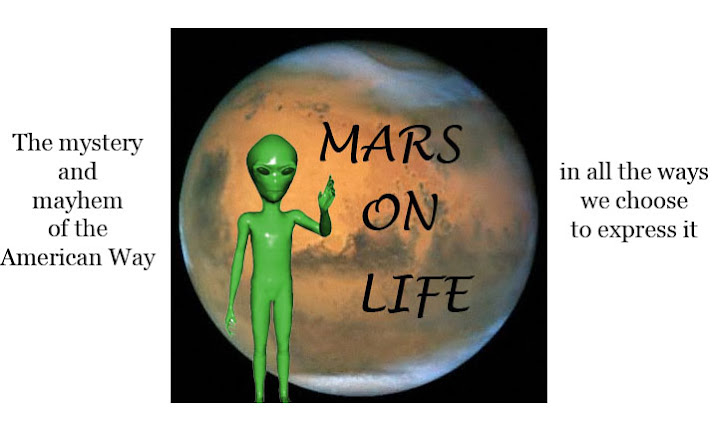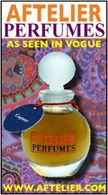 Watching the movie Woodstock today, or, for that matter, watching the History Channel's 1968 with Tom Brokaw, feels as stylistically alien as examining a nitrate film reel of Patou-clad dowagers exiting transatlantic cruise ships. Whereas the political, musical, and cultural zeitgeist of that year evolved and then went into a slow fadeout over the yardarm of the sixties, the fashion burned out in the graveyard of American design: catalogue retail.
Watching the movie Woodstock today, or, for that matter, watching the History Channel's 1968 with Tom Brokaw, feels as stylistically alien as examining a nitrate film reel of Patou-clad dowagers exiting transatlantic cruise ships. Whereas the political, musical, and cultural zeitgeist of that year evolved and then went into a slow fadeout over the yardarm of the sixties, the fashion burned out in the graveyard of American design: catalogue retail. The strongest signifiers of hippie fashion included tie-dyed shirts, the fringed or mirrored vest, the headband, the torn and patched jeans, and the peace sign or love bead jewelry. This image of hippie fashion was the most widely disseminated one (always shown on a bearded longhair, to cultivate the impression of social menace), the one mo
The strongest signifiers of hippie fashion included tie-dyed shirts, the fringed or mirrored vest, the headband, the torn and patched jeans, and the peace sign or love bead jewelry. This image of hippie fashion was the most widely disseminated one (always shown on a bearded longhair, to cultivate the impression of social menace), the one mo st associated with free love, dropping acid, and communal living. It was also the one responsible for a great moral surge that occurred near the end of the era, after the Manson murders.
st associated with free love, dropping acid, and communal living. It was also the one responsible for a great moral surge that occurred near the end of the era, after the Manson murders.
In actuality, hippie fashion was a magpie that feathered its nest from hundreds of disconnected and at times oppositional sources. A short list of influences would include:
19th-century pioneer
Native American
Gypsy
Religious
Circus/Minstrel/Burlesque
Victoriana
Renaissance
Mythological
Arab/African/Oriental/Moroccan
Peasant
Wild West
Military
Mountain Man/Daniel Boone/Davy Crockett
The largest embryonic influence on hippie fashion was not hippie at all, or at least not hippie as it came to be known at the end of the era. Initially, the hippie of 1966-67 borrowed heavily from Carnaby Street and the King's Road, or from the remnants of Swinging London. From London and the Beatles came the Nehru collars and from Africa by way of London the colorful djellabas and dashikis.
There were as many hippie "looks" as there were youths turning away from mainstream culture and the Johnson-era White House. With fashion thus diversified, it becomes hard to pigeonhole a hippie style by means of geography, although Los Angeles bred something we might call the "rich hippie," of which the foremost practioners were Sonny and Cher.
Sonny and Cher, you ask? Sonny and Cher were so uncool they probably bathed in hot milk. Your apron-wearing, cookie-baking mother knew the words to "I Got You, Babe" and deemed it safe to sing at the family cookout. That Sonny and Cher.
Sonny Bono  pioneered the rich hippie look, which included his trademark Prince Valiant haircut, and, more importantly, a fur vest. For the short year from 1965 to 1966, Sonny Bono (and by association Cher) was a fledgling hippie icon, even if within a year he would look as awkward as a middle-aged commodities trader trying to "get down" with the kids in the street.
pioneered the rich hippie look, which included his trademark Prince Valiant haircut, and, more importantly, a fur vest. For the short year from 1965 to 1966, Sonny Bono (and by association Cher) was a fledgling hippie icon, even if within a year he would look as awkward as a middle-aged commodities trader trying to "get down" with the kids in the street.
The rich hippie look was later adopted by the band Three Dog Night (who added circus inflections), and by 1968 there was a Los Angeles fashion sub-speciality, the Topanga Canyon "pioneer" hippies, a group that sprang out of the refrain of the Sunset Strip folk music scene. In San Francisco, the "mod" look had given way in part to an influx of bells, beads, and whistles thanks to the transformative power of religion, and then to a full-out tie-dye epidemic strongly associated with the transformative powers of lysergic acid diethylamide.
Elsewhere, the mere act of growing one's hair downwards towards the collar signified a hippie ethos; this was after all the era of what I'll call NASA fashion, a faceless aesthetic that involved short-sleeved button-down shirts and hair cut to make Uncle Sam throw a snappy salute.
The Woodstock film proves that the media-promulgated image of the hippie was for the most part somewhat isolated. Men's hair doesn't universally touch the shoulders, tie-dye isn't blooming in the field; where are the mirrored velvet vests and the slouchy felt hats?
The answer was: on television and in boutiques. By 1969, hippie fashion had become a retail breadwinner across America. In those pre-mall days, most of America patriotically shopped the Sears, Roebuck catalogue. Most of America also tuned in to Rowan and Martin's Laugh In, a weekly comedy series where Dick Martin often donned a Bono-like wig and vest to satirize the hippie's sartorial customs. America got the joke and laughed along in the safety and sanctity of the family living room, after eating a meal of pot roast and mashed potatoes.
It wasn't Laugh In and that program's gentle jibes that signaled the death of hippie fashion, it was the long-running American television series The Brady Bunch, specifically an episode occurring in the show's second season. It was then, on February 5, 1971, that hep-talking Greg Brady (played by actor Barry Williams) bought some "threads" to impress "a chick" and the whole thing went to hell in a handbasket.
occurring in the show's second season. It was then, on February 5, 1971, that hep-talking Greg Brady (played by actor Barry Williams) bought some "threads" to impress "a chick" and the whole thing went to hell in a handbasket.
Sears, Roebuck sat up and took notice. By Christmas of the next year, the giant retail monolith was advertising hippie-inflected clothing in its cornily named "Put On Shop" and "Groovy Group" (forever after cementing its uncoolness in junior high schools nationwide, the exact opposite of the intent). Hippie fashion had now reached Mittel America, some five or six years after its genesis, and it was gone again when it became a hopeless pastiche of smiley faces, peace signs, and lava lamps. By this time, the fashion had completely and irredeemably lost its cred with all but the Deadheads, and the hippie himself had started on his long assimilation into the financial lap of corporate America.
Images:
Time Magazine, July 7, 1967
Hippie Bus (note short hair and mainstream clothing on a number of the men)
Media-reinforced "hippie" image as the wild-haired "freak"
Sonny and Cher, circa 1965
Sears takes on the hippie look by way of the Partridge Family, Christmas 1971
Wednesday, December 12, 2007
Good (Hippie) Shit
Labels:
1968 fashion,
Hippie fashion
Subscribe to:
Post Comments (Atom)









2 comments:
Quality posts with substance, Suzanna. Keep up the good, inspiring work. Thanks for the addition in your blogroll.
Thank you, Miss CM, and backatcha!
Post a Comment